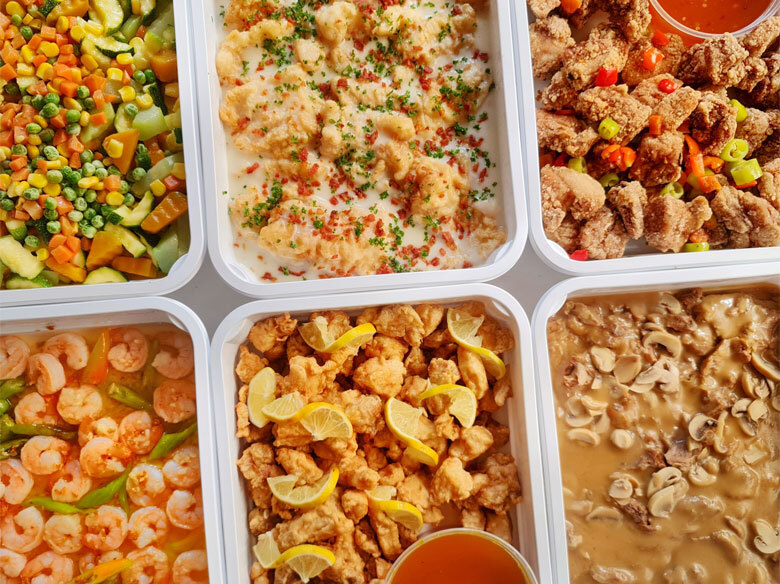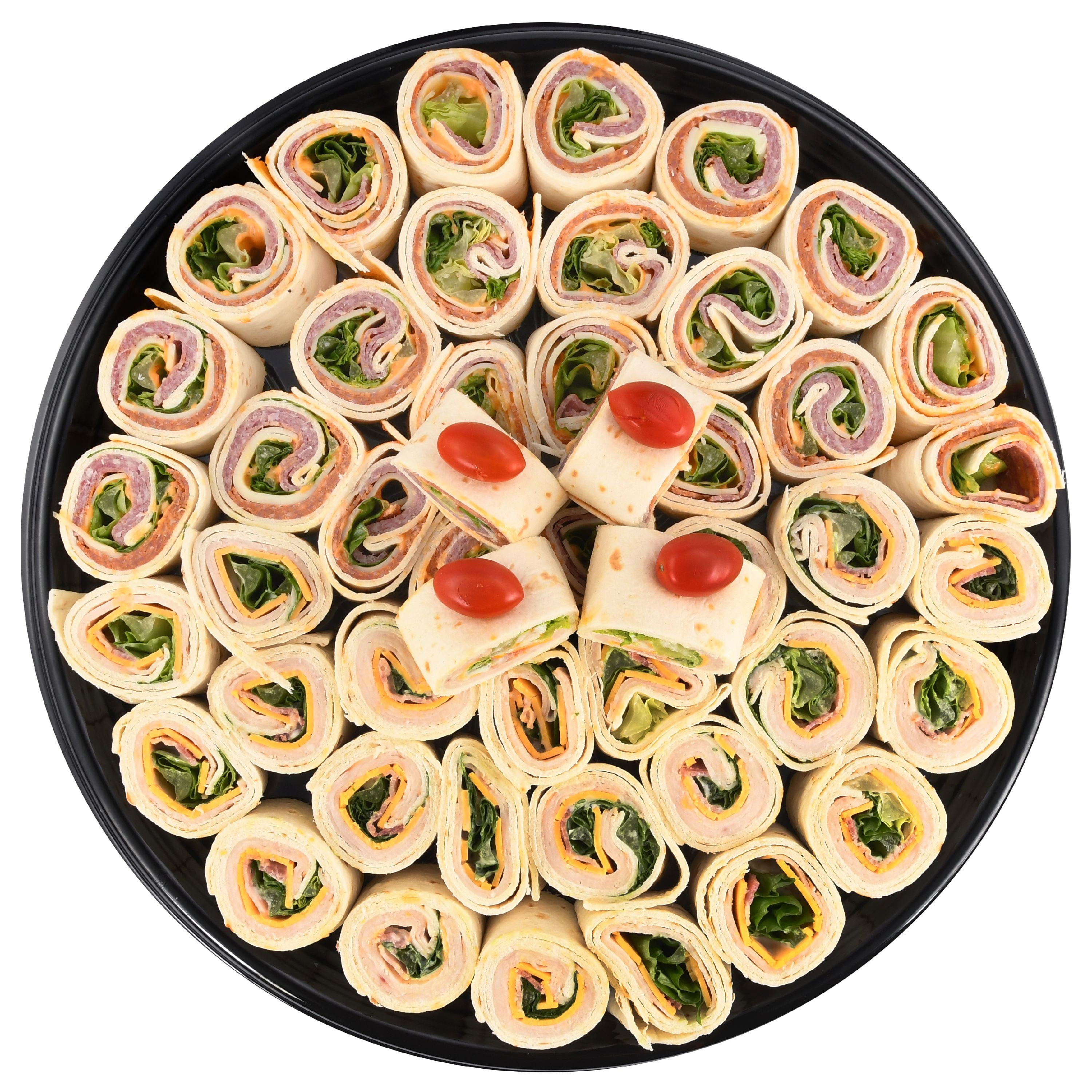Party food trays are a delightful way to serve guests at any gathering. Whether it’s a casual get-together or a formal event, these trays offer a convenient and visually appealing option for feeding your guests. In this guide, we’ll delve into the world of party food trays, exploring different types, presentation tips, dietary considerations, and creative ideas to help you create impressive and delicious spreads.
From cold platters to hot hors d’oeuvres and decadent dessert trays, there’s a wide range of options to choose from. We’ll discuss the advantages and disadvantages of each type, providing examples of popular food items that will tantalize your guests’ taste buds.
Types of Party Food Trays

Party food trays come in a variety of styles, each with its own advantages and disadvantages. Some of the most popular types of party food trays include:
- Cold platters:Cold platters are a great option for parties where you want to serve food that is easy to eat and doesn’t require heating. Common items on cold platters include sliced meats, cheeses, vegetables, and dips.
- Hot platters:Hot platters are a good choice for parties where you want to serve food that is warm and hearty. Common items on hot platters include mini quiches, chicken wings, and meatballs.
- Dessert trays:Dessert trays are a must-have for any party. Common items on dessert trays include cookies, brownies, and cupcakes.
Advantages and Disadvantages
Each type of party food tray has its own advantages and disadvantages. Cold platters are relatively easy to prepare and can be made ahead of time. However, they can be limited in terms of variety. Hot platters offer a wider variety of options, but they can be more time-consuming to prepare and may require special equipment.
Dessert trays are a great way to end a party on a sweet note. However, they can be high in calories and sugar. Ultimately, the best type of party food tray for you will depend on your specific needs and preferences.
Presentation and Design
The presentation and design of party food trays play a crucial role in enhancing the overall dining experience. An aesthetically pleasing arrangement not only captivates the eyes but also stimulates the appetite, creating a positive impression on your guests.
Arranging Food Items Attractively
When arranging food items on a tray, consider the following tips:
- Variety of Colors:Use a diverse range of colors to create a visually appealing display. Incorporate fruits, vegetables, dips, and crackers in different hues to add vibrancy.
- Height and Dimension:Create height and dimension by using bowls, platters, and serving dishes of varying heights. This adds depth and interest to the tray.
- Grouping Similar Items:Group similar items together, such as cheese cubes with crackers or fruit slices with yogurt dips. This helps organize the tray and makes it easier for guests to locate their desired choices.
li> Balance and Symmetry:Strive for balance and symmetry in your arrangement. Avoid overcrowding one side of the tray or creating a lopsided appearance.
Garnishes and Decorations, Party food trays
Garnishes and decorations can elevate the visual appeal of your party food trays. Consider using:
- Fresh Herbs:Fresh herbs like parsley, cilantro, or mint add a touch of color and freshness to the tray. Sprinkle them over dips, salads, or meats.
- Edible Flowers:Edible flowers, such as nasturtiums or pansies, provide a delicate and colorful accent to the trays. Use them sparingly to avoid overpowering the food.
- Citrus Wedges:Citrus wedges, like lemon or lime, add a pop of color and freshness to the tray. They can be used as a garnish for seafood, dips, or cocktails.
- Skewers:Skewers can be used to create visually appealing arrangements of fruit, cheese, or meats. They also make it easier for guests to pick up and enjoy the food.
Dietary Considerations

When planning party food trays, it is crucial to consider dietary restrictions and preferences to ensure an inclusive and enjoyable experience for all guests.Dietary restrictions can range from allergies, which can cause severe reactions, to intolerances, which may lead to discomfort or digestive issues.
Additionally, some guests may follow specific diets, such as vegan, vegetarian, or gluten-free.To create trays that cater to diverse dietary needs, consider the following guidance:
Allergy and Intolerance Awareness
* Determine if any guests have food allergies or intolerances.
- Clearly label all trays with ingredients to inform guests of potential allergens.
- Avoid cross-contamination by using separate utensils and trays for items containing allergens.
Special Diets
* Offer a variety of options to accommodate special diets, such as:
Vegan
Plant-based foods without animal products
Vegetarian
Plant-based foods including eggs and dairy
Gluten-free
Foods without wheat, rye, or barley* Consider providing a separate tray or area for guests with specific dietary needs.By addressing dietary considerations, you can create a welcoming and inclusive party atmosphere where everyone can enjoy the food without worry or discomfort.
Food Safety and Handling
Ensuring food safety is paramount when preparing and serving party food trays. Improper handling can lead to foodborne illnesses, causing discomfort and potentially severe health consequences. Understanding food safety practices is crucial to prevent such risks and ensure the well-being of guests.
Foodborne illnesses are caused by harmful bacteria, viruses, or parasites present in food. Common symptoms include nausea, vomiting, diarrhea, and abdominal pain. In severe cases, they can lead to hospitalization or even death.
Food Storage
- Keep cold foods cold and hot foods hot:Use insulated containers or ice packs to maintain appropriate temperatures.
- Store food in sealed containers:Prevent cross-contamination by storing different types of food separately in airtight containers.
- Follow storage guidelines:Adhere to recommended storage times and temperatures for different food items to ensure freshness and safety.
Food Preparation
- Wash hands thoroughly:Clean hands with soap and water before handling food to prevent the spread of bacteria.
- Use clean utensils:Avoid cross-contamination by using separate utensils for different food items.
- Cook food to proper temperatures:Ensure food is cooked to the recommended internal temperature to kill harmful bacteria.
Food Transportation
- Maintain temperature control:Use insulated containers or ice packs to maintain food at safe temperatures during transportation.
- Protect food from contamination:Cover food trays with plastic wrap or lids to prevent exposure to contaminants.
- Minimize transportation time:Transport food within a reasonable time frame to minimize the risk of spoilage or temperature fluctuations.
Cost-Effective Options: Party Food Trays
Creating party food trays on a budget is possible with a few clever strategies. Consider these tips to save money on ingredients, packaging, and decorations:
- Shop at discount stores or use coupons for ingredients.
- Buy fruits and vegetables in season for lower prices.
- Choose generic brands or store brands over name brands.
Instead of purchasing pre-made treats, make homemade snacks like:
- Fruit platters with seasonal fruit
- Homemade dips and spreads
- Popcorn balls or other simple snacks
Creative Ideas and Inspirations

Elevate your party food trays with unique and innovative designs that will leave a lasting impression on your guests. Explore the endless possibilities of creative ideas, incorporating seasonal ingredients, themes, and color schemes to create visually stunning and delectable platters.
Seasonal Inspirations
- Spring:Delicate pastels, fresh fruits, and blooming flowers bring a touch of springtime charm to your trays.
- Summer:Vibrant colors, tropical fruits, and refreshing dips evoke the carefree spirit of summer.
- Autumn:Earthy tones, warm spices, and roasted vegetables create a cozy and inviting atmosphere.
- Winter:Festive reds, greens, and whites, along with hearty cheeses and seasonal fruits, add a touch of holiday cheer.
Themed Trays
Create a cohesive party experience by designing trays that align with your party’s theme. From elegant black-tie affairs to whimsical children’s parties, themed trays add an extra layer of fun and sophistication.
- Masquerade Ball:Intricate masks, lace doilies, and jewel-toned treats.
- Tropical Getaway:Palm leaves, pineapple chunks, and tropical dips.
- Superhero Soiree:Comic book graphics, bold colors, and superhero-inspired snacks.
Color Schemes
Use color schemes to create visually appealing trays that complement your party’s decor. Consider using complementary colors, analogous colors, or monochromatic shades to achieve a harmonious and eye-catching display.
- Monochromatic:Different shades of a single color create a sophisticated and elegant look.
- Complementary:Opposing colors on the color wheel, such as red and green or blue and orange, create a vibrant and eye-catching contrast.
- Analogous:Colors that are adjacent to each other on the color wheel, such as blue, blue-green, and green, create a harmonious and soothing effect.
Q&A
How do I choose the right type of party food tray for my event?
Consider the formality of your event, the number of guests, and any dietary restrictions. Cold platters are suitable for casual gatherings, while hot platters are ideal for formal events. Dessert trays are a must-have for sweet treats.
What are some tips for arranging food items attractively on a party food tray?
Use a variety of colors and textures to create visual interest. Arrange items in different heights and shapes to add dimension. Consider using garnishes like herbs, edible flowers, or citrus slices to enhance the presentation.
How can I create party food trays that cater to diverse dietary needs?
Inquire about any dietary restrictions in advance and label trays accordingly. Offer a variety of options, including gluten-free, dairy-free, and vegan items. Consider preparing smaller portions to accommodate different needs.
